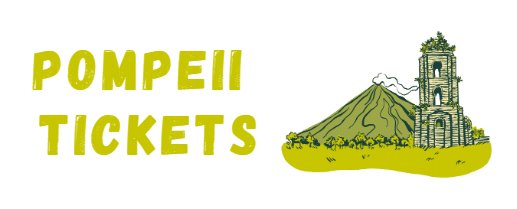About Pompeii to Herculaneum Tour
Pompeii to Herculaneum Tour
Preservation of Ancient Roman Life: Pompeii and Herculaneum were both Roman cities that were buried under volcanic ash during the eruption of Mount Vesuvius in 79 AD, which led to their remarkable preservation. Walking through the well-preserved ruins of these cities provides a glimpse into the daily life, architecture, and culture of ancient Romans, including their homes, streets, public buildings, and artwork.
UNESCO World Heritage Site: Both Pompeii and Herculaneum are recognized as UNESCO World Heritage Site, owing to their outstanding universal value and significance as archaeological and cultural treasures. Visiting these sites allows you to explore and appreciate their historical importance as well as contribute to their preservation for future generations.
Unique Archaeological Sites: Pompeii and Herculaneum are among the most significant and well-preserved archaeological sites in the world. The opportunity to witness firsthand the remains of ancient Roman cities frozen in time by volcanic ash is a truly remarkable experience for history and archaeology enthusiasts.
Also, Check: Pompeii & Amalfi Coast Day Trip from Rome
Pompeii to Herculaneum Tour Highlights
This is the main attraction in Herculaneum and encompasses the entire ancient city. You can explore the incredibly preserved ruins of houses, shops, streets, and public buildings, giving you a glimpse into the daily life of the ancient Romans. Highlights include the House of the Bicentenary, the House of the Deer, the House of the Skeleton, and the House of Neptune and Amphitrite.
Must Read: Pompeii Forum
This was an opulent Roman villa that belonged to the family of Julius Caesar's father-in-law, and it was known for its impressive library of papyrus scrolls. Although the villa itself has not yet been fully excavated, you can see the stunning sculptures, frescoes, and other artifacts that have been recovered, including the famous "Hercules" statue.
Suggested Reads: Pompeii Entrances
Herculaneum was known for its elaborate public baths, and you can still see the remains of several thermal bath complexes, such as the Central Baths and the Suburban Baths. These were important social and cultural centers in ancient Roman society, and you can marvel at the intricate mosaics, frescoes, and architectural features that adorned these structures.
You May Also Like: Herculaneum Ruins
This was the main street of Herculaneum and was lined with shops, houses, and public buildings. Walking along the Decumanus Maximus gives you a sense of the layout and urban planning of the ancient city, and you can see the remains of shops and workshops that once thrived here.
Also Read: Pompeii Museum
This well-preserved Roman house is known for its intricate wooden partition that once separated the atrium from the peristyle. The house also has beautiful frescoes, mosaics, and other decorative elements that provide insight into the daily life of the Roman elite.
Also Checkout: Pompeii Antiquarium
This is a large Roman house named after the Samnite-style frescoes that adorn its walls. The frescoes depict scenes from mythology and everyday life, and they are considered some of the finest examples of Roman painting.
Recommended Reads: Archaeological Park of Pompeii
These are a series of vaulted structures near the ancient shoreline of Herculaneum where several well-preserved wooden boats were found during the excavation. These boats are a unique and rare find and provide valuable information about Roman naval technology and maritime trade.
Suggested Reads: Pompeii Amphitheatre
Book Pompeii Tickets
FAQs
How far is the distance between Pompeii and Herculaneum?
The distance between Pompeii and Herculaneum is approximately 10 kilometers (6 miles) along the Bay of Naples in Italy.
Recommended Reads: Naples to Pompeii Day Trip
How can I travel from Pompeii to Herculaneum?
You can travel from Pompeii to Herculaneum by various means of transportation, including trains, buses, taxis, or by renting a car. Trains are a popular and convenient option, with a direct Circumvesuviana train that connects the two cities in just a few minutes.
Must Read: Rome to Pompeii Day Trip
How long does it take to visit Pompeii and Herculaneum?
The duration of your visit to Pompeii and Herculaneum depends on your level of interest and exploration. Generally, it takes several hours to visit the highlights of each site, but for a more in-depth experience, you may need a full day or more to fully appreciate the ancient ruins and their significance.
Suggested Reads: Pompeii Guided Tour
Can I visit Pompeii and Herculaneum on the same day?
Yes, it is possible to visit both Pompeii and Herculaneum on the same day, as they are relatively close to each other. However, keep in mind that both sites are extensive, and spending quality time at each location may require careful planning and time management.
Must Checkout - Vatican Library
Are there guided tours available from Pompeii to Herculaneum?
Yes, there are guided tours available from Pompeii to Herculaneum. Many tour operators offer guided tours that include transportation, expert guides, and admission tickets to both sites. Joining a guided tour can provide you with valuable insights, historical information, and a more organized experience while exploring these ancient Roman cities.

